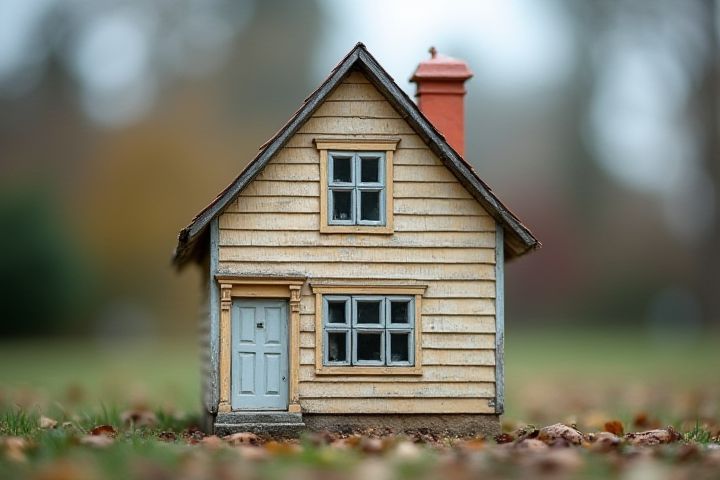
House prices fluctuate due to various factors, including economic conditions, interest rates, and local market demand. When the economy is strong, demand for housing tends to rise, pushing prices up; conversely, during economic downturns, prices often drop as buyer confidence wanes. Interest rates play a crucial role; lower rates increase affordability, enticing more buyers into the market, while higher rates can deter potential purchasers, leading to reduced demand. Seasonal trends also impact prices, as many families prefer to move during warmer months, resulting in cyclical fluctuations throughout the year. Local factors such as job growth, school district ratings, and neighborhood development can further influence property values in specific regions.
Why House Prices Fluctuate
Supply and Demand
House prices fluctuate due to the fundamental economic principle of supply and demand. When demand for homes outpaces the available supply, prices tend to rise as buyers compete for limited listings. Conversely, if there is an oversupply of homes on the market and fewer buyers, prices tend to drop as sellers lower their asking prices to attract offers. Seasonal trends, economic conditions, and local market dynamics also play crucial roles in shaping the supply-demand balance, affecting your real estate investment decisions.
Interest Rates
Interest rates play a crucial role in influencing house prices, as they affect mortgage affordability for potential homebuyers. When central banks raise interest rates to combat inflation, borrowing costs increase, leading to higher monthly mortgage payments, which can deter buyers and reduce demand. Conversely, lower interest rates can stimulate the housing market by making home loans more affordable, often resulting in increased demand and higher home prices. An awareness of current interest rate trends can help you make informed decisions in the real estate market, whether buying or selling.
Economic Conditions
House prices fluctuate significantly due to a variety of economic conditions, primarily influenced by factors such as interest rates, employment rates, and inflation. When interest rates rise, borrowing becomes more expensive, reducing demand for housing and often leading to a decrease in prices. Conversely, low unemployment rates typically increase consumer confidence and spending power, driving up demand and, consequently, house prices. Furthermore, in times of high inflation, the cost of construction materials and labor increases, which can also contribute to rising home prices as developers pass on costs to buyers.
Employment Rates
Employment rates play a critical role in influencing house prices, as they directly impact income levels and consumer confidence. When the employment rate rises, typically above 4%, it indicates a robust job market, leading to increased demand for housing; homebuyers feel secure in their financial stability and are more likely to invest in property. Conversely, when employment rates fall, particularly below 6%, fewer people can afford to buy homes, resulting in decreased demand and a potential drop in prices. The correlation between employment and housing is evident, with fluctuations in job statistics often preceding shifts in the real estate market.
Government Policies
Government policies significantly influence house prices through regulations, tax incentives, and interest rates. For instance, a change in the Federal Reserve's interest rate can lead to a 0.5% fluctuation in mortgage rates, making homes more or less affordable for buyers. Additionally, zoning laws and housing development policies can restrict supply, driving prices up in areas with limited housing availability. By implementing tax credits for first-time buyers, governments can stimulate demand, ultimately affecting property values in the marketplace.
Demographics
Demographic factors, such as age, income, and migration patterns, play a crucial role in driving house price fluctuations. For instance, as millennials reach peak home-buying age, their demand for properties in urban areas has significantly increased, causing prices in those markets to rise. Furthermore, a surge in high-income earners relocating to specific cities can lead to rapid price appreciation, while areas experiencing population decline may see a drop in property values. Understanding these demographic trends can help you make informed decisions about buying or selling real estate.
Consumer Confidence
Consumer confidence plays a crucial role in house price fluctuations, as it reflects how optimistic buyers feel about the economy and their financial stability. When consumer confidence is high, individuals are more likely to invest in real estate, leading to increased demand and, consequently, rising property prices. Conversely, when confidence dips, potential buyers may hold off on purchasing homes, resulting in decreased demand and falling prices. As of October 2023, monitoring consumer sentiment indicators, such as the Consumer Confidence Index, can provide valuable insights into potential shifts in the housing market.
Location Desirability
Location desirability significantly impacts house prices due to several factors, including proximity to amenities, schools, and public transport. Areas characterized by low crime rates and high-quality schools can command prices that are 10-30% higher than similar homes in less desirable neighborhoods. Moreover, regional developments, such as new shopping centers or parks, can lead to price increases of up to 15% within a year. Understanding these dynamics allows you to make informed decisions when buying or selling property.
Housing Market Trends
House prices fluctuate due to various factors influencing the housing market, including supply and demand dynamics, economic conditions, and interest rates. When demand for homes exceeds supply, prices tend to increase, reflecting heightened competition among buyers. Conversely, an oversupply of housing can lead to decreased prices as sellers reduce costs to attract buyers. Additionally, external factors such as job growth, population shifts, and government policies can significantly impact market trends, creating a constantly evolving landscape for homebuyers and investors.
Inflation Rates
House prices are significantly influenced by inflation rates, which affect the purchasing power of consumers. When inflation rises, the cost of construction materials and labor increases, leading to higher home prices as builders pass those costs on to buyers. For instance, a 5% rise in inflation can result in a corresponding increase in house prices, making it more challenging for potential homeowners to enter the market. As inflation affects interest rates, higher mortgage costs can deter buyers, further contributing to price fluctuations in the housing market.
